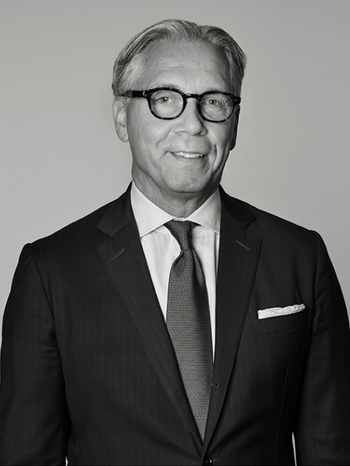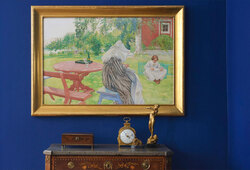Contemporary Art & Design Presents Yves Klein
"Untitled Blue Monochrome (IKB 154)"
Bukowskis is proud to present the artwork "Untitled Blue Monochrome (IKB 154)" by Yves Klein at the upcoming auction Contemporary Art & Design – the leading auction in Scandinavia for contemporary art and design
Yves Klein (1928-1962) was one of the leading figures of the Neorealism art movement and is best known today for his Klein blue objects. During his all-too-brief life, he was also a pioneer of performance art, the most subversive art movement after Cubism.
He conquered the azure sky by simply claiming to have invented its colour, International Klein Blue (IKB), which he did in 1957. In a 1959 lecture at the Sorbonne, Klein said that the blue monochromes are recognisable and similar in appearance, yet unique and different from each other.
Klein used the blue colour as a means to capture immateriality and infinity. His celebrated, more-blue-than-blue hue, radiates colourful waves of blue that propagate through his oeuvre. Klein's innovative and almost spiritual art form broke down boundaries between conceptual art, sculpture, painting and performance. His works, deeply characterised by the dualism between action and ritual, continue to influence and fascinate art lovers worldwide.

He set out on his ‘adventure into monochrome’, influenced by Japanese philosophy and art. By combining the rigor and discipline of judo with the free and provocative expression of art, Klein wanted to ‘liberate colour from the prison of lines’. One interpretation of what drove Klein was the ‘allness’. To be able to embrace and own the beautiful.
Klein was initially a dedicated practitioner of the martial art of judo. He received his black belt at the age of 24 from the Kôdôkan Institute in Tokyo in 1952. He was the only Westerner to achieve such a level of discipline and skill at the time. Klein continued his passionate career as a practitioner of judo, teaching at the Spanish Judo Federation in Madrid, writing the book ‘Le Fondements du Judo’ (The Foundations of Judo), and opening his own judo school in Paris. It was only then, back in Paris in 1954, that he began to devote himself wholeheartedly to his second passion in life: art.
Between May 1954 and June 6, 1962, the date of his death, Yves Klein dedicated his life to groundbreaking art that marked his era and still captivates audiences today.
Read more about the work
To the catalogue – Contemporary Art & Design

The work will be sold at Contemporary Art & Design
Estimate 2 000 000 – 4 000 000 SEK
Online catalogue will be published on October 8
Viewing October 17–20, Berzelii Park 1, Stockholm
Live auction October 22–23, Arsenalsgatan 2, Stockholm
Read more about Contemporary Art & Design
Requests & condition reports

Tukholma
Andreas Rydén
Varatoimitusjohtaja, Johtava asiantuntija, taide
+46 (0)728 58 71 39

Tukholma
Louise Wrede
Asiantuntija, nykytaide, Private Sales
+46 (0)739 40 08 19

Tukholma
Karin Aringer
Asiantuntija – nykytaide ja valokuva
+46 (0)702 63 70 57























